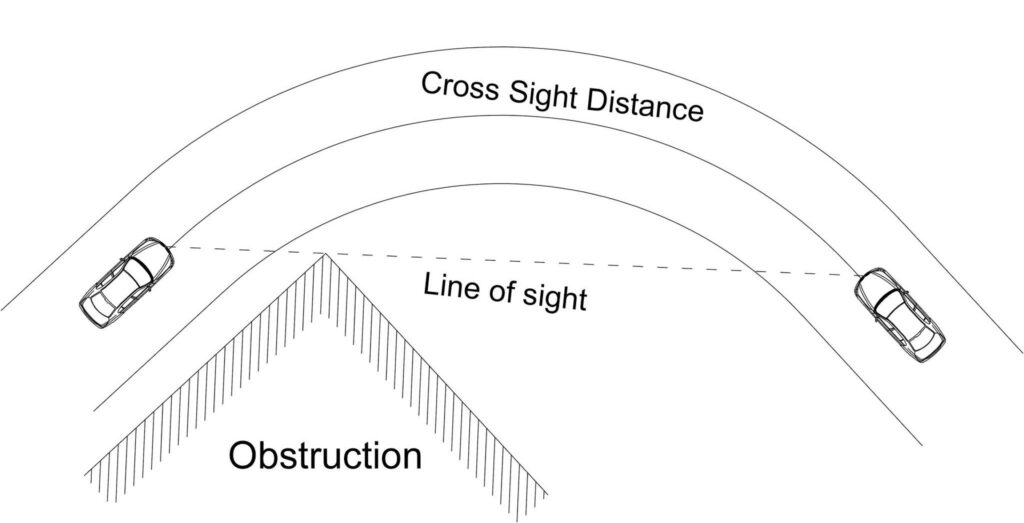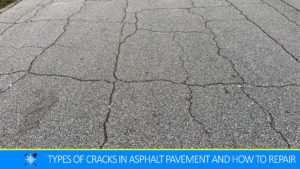Sight distance is a critical parameter in road design and safety analysis. It refers to the length of roadway ahead visible to a driver at any given moment. Proper sight distance allows drivers to perceive and react to potential hazards, ensuring safe vehicle operation. This article explores the concept, types, and factors influencing sight distance, along with its importance in highway design.
Sight Distance
The minimum or optimum distance along the centre of the road to the object which offers a diver visibility of the approaching object is called Sight Distance. During this short distance, a diver will have enough time to react upon approaching the objects. However, this is affected by some factors as discussed below.
Factor Affecting Sight Distance
The sight distance depends upon the following factors:-
- Speed of the vehicle
- The friction resistance of the road
- Height of the diver’s eyes
- Slop of the road surface
- Perception time and brake reaction time
Types of Sight Distance
Given the above factor and the importance of sight distance, to ensure that drivers have enough distance to perceive, react, and safely manoeuvre their vehicles under various conditions. Sight distance is categorized into different types based on the design needs:
1. Stopping Sight Distance (SSD)
The clear distance needed by a diver to bring his vehicle to a complete stop or to rest before meeting the stationary object on the road is called stopping sight distance. This is sometimes called minimum sight distance. It includes;
- Perception-reaction distance: Time taken to perceive and react.
- Braking distance: Distance travelled during braking.
Formula for SSD:
\( SSD=\frac{V^2}{2gf}+0.278Vt \)
Where,
\(v\) = vehicle speed (m/s or km/h)
\(g\) = acceleration due to gravity (9.81 m/s²)
\(f\) = coefficient of friction
\(t\) = perception-reaction time (seconds)
Some of the examples of sight distance at various situations of the road are:-
- Sight Distance at Horizontal Curve as illustrated below.

- Sight Distance at Road Intersection as illustrated below.

- Sight Distance at Vertical Summit Curve as illustrated below.

| Speed | Perception & Break Reaction | Breaking | Safe Stopping Sight Distance | |||
|---|---|---|---|---|---|---|
| V | Time, t (sec) | Distance (m), d1=0.278Vt | Coefficient of longitudinal friction (f) | Distance (m) d2=V2/254f | Calculated values (d1+d2) | Values (m) |
| 20 | 2.5 | 14 | 0.40 | 4 | 18 | 20 |
| 25 | 2.5 | 18 | 0.40 | 6 | 24 | 25 |
| 30 | 2.5 | 21 | 0.40 | 9 | 30 | 30 |
| 40 | 2.5 | 28 | 0.38 | 17 | 45 | 45 |
| 50 | 2.5 | 32 | 0.37 | 27 | 62 | 60 |
| 60 | 2.5 | 42 | 0.36 | 39 | 81 | 80 |
| 65 | 2.5 | 45 | 0.36 | 46 | 91 | 90 |
| 80 | 2.5 | 56 | 0.35 | 72 | 120 | 130 |
| 100 | 2.5 | 72 | 0.35 | 112 | 182 | 180 |
2. Intermediate sight distance (ISD)
The distance that offers reasonable opportunities for a driver to overtake his vehicle with caution is known as intermediate sight distance. It is twice the stopping sight distance.
| Speed (km/h) | Intermediate Sight Distance (m) |
|---|---|
| 20 | 40 |
| 25 | 50 |
| 30 | 60 |
| 35 | 80 |
| 40 | 90 |
| 50 | 120 |
| 60 | 180 |
| 80 | 240 |
| 100 | 360 |
3. Decision Sight Distance
Decision sight distance is the length of roadway needed for a driver to detect, interpret, and react to complex situations, such as road diversions or intersections. It is longer than SSD and accounts for situations requiring more cognitive effort.
The following are examples of locations where it is desirable to provide decision sight
distance:
- Exit ramps
- Diverging roadway terminals
- Intersection stop bars
- Changes in the cress section
- Areas of concentrated demand where there is apt to be visual noise
Also, read: Traffic Islands: Types and Functionality
4. Overtaking Sight distance (OSD)
The minimum distance required by the diver to overtake a slow-moving vehicle ahead in the same direction and safely manoeuvre against the approaching vehicle from the opposite direction is called overtaking sight distance.
The minimum overtaking sight distance depends upon the following factors:
- Speed of overtaking, overtaking and the speed of the vehicle coming from the opposite direction.
- Distance between the vehicles.
- Rate of acceleration of the overtaking vehicle.
- Skill and reaction time of the driver.
Derivation of OSD
Let,
d1= Distance travelled by the overtaking vehicle ‘A’ during the reaction time t sec of the driver from position A1 to A2.
d2= Distance travelled by the overtaking vehicle ‘A’ from position A2 to A3 during the actual overtaking operation, in time T sec.
d3= Distance travelled by the oncoming vehicle ‘C’ from position C1 to C2 during the actual overtaking operation of A, in time T sec.
VB = Speed of the overtaken vehicle in m/sec.
S = Minimum spacing between vehicles A and B.
Thus, d1= VB. t
The minimum spacing (S) between the vehicle is given by the empirical formula:
S = (0.7 VB+ 6) m
The distance covered by the overtaken vehicle B from position B1 to B2 during the overtaking operation in T sec is given by,
b = VB.T
d2= 2S + b = VB.T + aT²/2
Where ‘a’ is acceleration of the vehicle A in m/Sec
Or, T = √ (4S/a)
Hence d2 = 2S + VB.T3=V.T
Where V is the design speed of vehicle C in m/Sec
Overtaking Sight Distance Formula For Two-way Traffic
=d1 + d2 =V.t+2S+(V.B.t+V.T).
Overtaking Sight Distance Formula for One-Way Traffic
= d1+ d2 = ( VB .t + 2S+ VB.T ) m
If VB is not given then its value may be assumed as
VB = (V – 4.5) m/Sec,
Where V is the design speed in m/Sec.
Also, read: Traffic Signs: The System For Traffic Control
References:
- Brockenbrough, R.L. (2009). Highway Engineering Handbook: Building and Rehabilitating the Infrastructure. (3rd ed.). The McGraw-Hill Companies, Inc.
- Indian Road Congress. (1998). Recommended Practice for Sight Distance On Rural Highways. Indian Road Congress. New Delhi- 110011
- Khanna, S.K., & Justo, C.E.G. (1971). Highway Engineering (8th ed). Roorkee (U.A.): Nem Chand & Bros. https://www.google.bt/books/edition/Highway_Engineering/CYOeQwAACAAJ?hl=en
- Wikipedia contributors. (2024, April 6). Stopping sight distance. Wikipedia. https://en.wikipedia.org/wiki/Stopping_sight_distance
![]()







